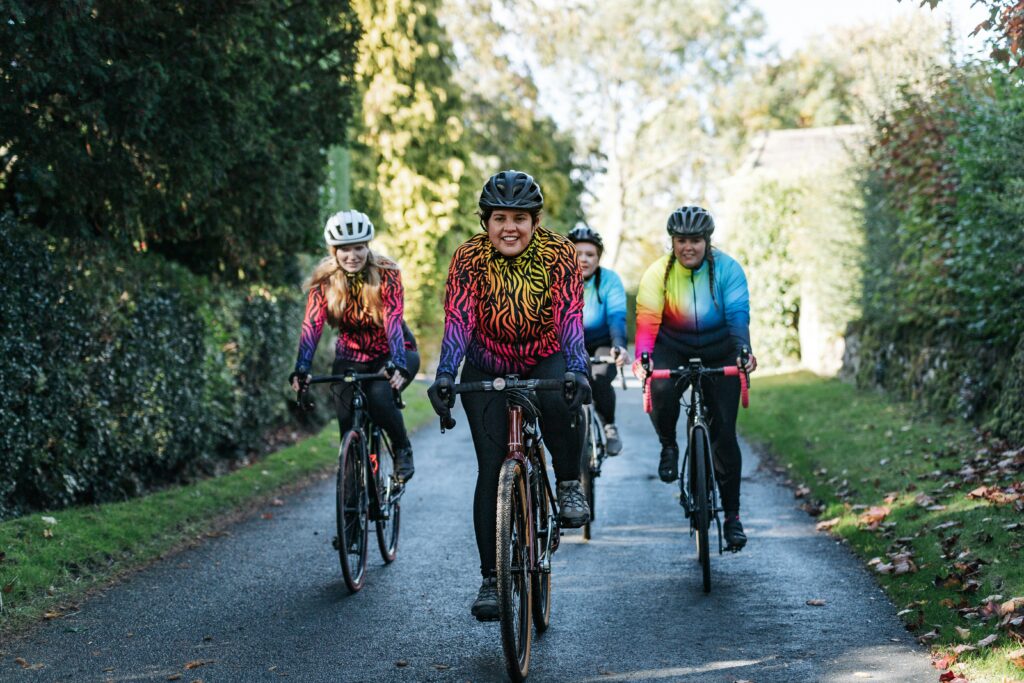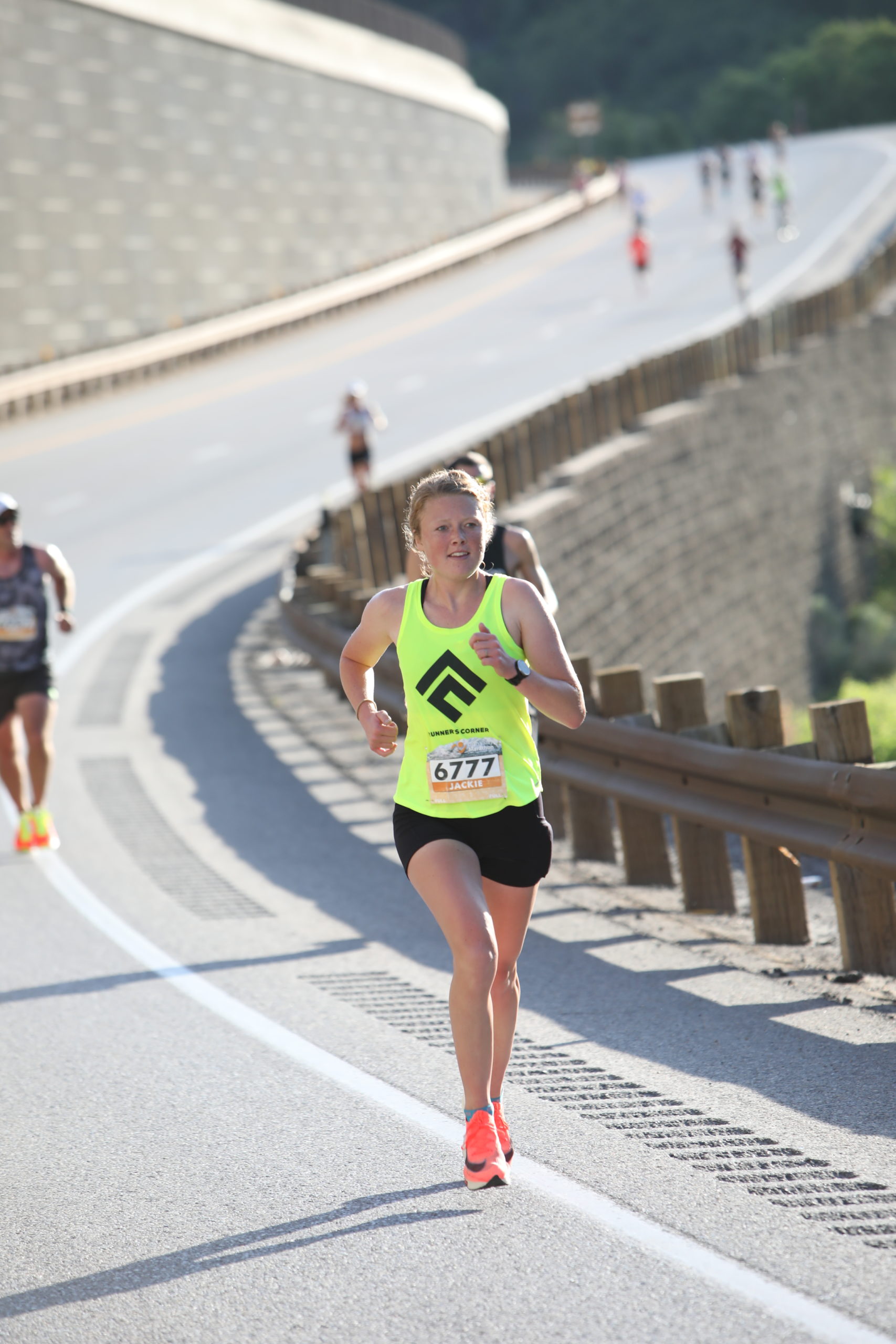Hydration Strategies for Endurance Athletes: Going Beyond Electrolytes

Proper hydration can make or break the way endurance athletes feel & are able to perform during a long ride, run, or swim. During endurance activities, athletes lose water and electrolytes in the form of sweat. Fluid loss impacts blood plasma volume. Losses greater than 2-4% of an athlete’s body weight can lead to impaired performance. Electrolytes balance blood pressure, nerve impulses, muscle contractions, heart beat, and fluid balance in the body. Excess loss of electrolytes, namely sodium, will have a negative impact on performance.
Put succinctly, athletes who adequately replenish their fluid & electrolyte losses from sweat are more likely to achieve optimal performance than those who do not.
Fluid Replacement
Maintaining optimal fluid balance is a delicate art. Replenishing fluid losses is important in order to avoid dehydration. However, we also need to be careful to not over-hydrate. This can lead to a condition called “hyponatremia” that is caused by having an excess of fluid that dilutes the concentration of sodium in the bloodstream.
Dehydration, or a fluid loss greater or equal to 2-4% of an athlete’s body weight, can lead to symptoms such as headache, fatigue, inability to perform, dizziness, dry mouth, high heart rate, low blood pressure, flushed skin, heat intolerance, constipation, and dark urine. If dehydration is also paired with an excess amount of sodium and electrolytes in the bloodstream, an athlete may experience more severe symptoms such as confusion, muscle twitching, seizures, or coma.
Overhydration, typically characterized by low sodium levels, may result in weight gain (too much water), confusion, seizures, nausea/vomiting, headache, fatigue, low blood pressure, muscle weakness, twitching, cramping, or swelling. Athletes at risk for this complication may start out exercise over-hydrated, have a low sweat rate, and may solely focus on replenishing water without replenishing sodium during exercise.
Anytime an athlete is competing in a warm climate, particularly if they are not acclimated to that kind of temperature & humidity, they are at greater risk for these issues. Warm temperatures can be considered anywhere from 60 degrees fahrenheit (15 degrees celsius) or above. Increasing the intensity and duration of a workout or race will also increase the need for fluid and electrolyte replacement as well as direct sun exposure. In warm temperatures, I recommend athletes bring water and electrolytes during endurance activities anytime they are going for 60 minutes or longer.
ADVERTISEMENT – Use Code RunTriBike to Save 20%

Electrolyte Replacement
There are a variety of electrolytes lost in sweat, but I typically recommend athletes narrow their focus on sodium intake. Sodium is the electrolyte lost in the highest amounts in sweat. While other electrolytes are stored inside of cellular fluid, sodium is stored on the outside of cellular fluid. This makes it easier to lose in sweat, and highlights the need to replenish sodium during and after exercise.
Most electrolytes can be balanced and replenished simply by having adequate food sources during the day, however, sodium requires more intentional effort. Check out this article (insert “Food Options of Electrolytes Article) to learn more about replenishing all of our electrolytes on a daily basis.
During endurance activities lasting longer than 60 minutes, athletes should be intentional about their sodium intake by including electrolyte beverages, salt stick capsules, sodium-rich gels or chews. The exact amount of sodium an athlete should take in is extremely personalized, but a general guideline to start with is replenishing 300-600 mg of sodium per hour of activity.
Personalized Hydration Plans
Finding your personal fluid & sodium needs during endurance activities takes trial and error. Sweat rates are wildly different between athletes. The two main components of sweat rate that we look at are fluid loss and sodium loss. Knowing the amount of fluid you lose does not determine the amount of sodium you lose. Ranges of sodium losses in athletes can vary from 200-2000 mg of sodium per liter of sweat, and ranges of fluid losses can vary from 1-4 liters per hour of activity!
To further complicate this balance, fluid and sodium losses will change depending on the temperature, humidity, effort given during exercise, altitude, and more. The most accurate way to assess these losses is with a sweat/hydration test or monitor. Nix, HDrop, and Levelen are all brands of monitors I recommend testing with.
Without using a monitor, you can still get a pretty accurate idea of your losses by relying on trial and error. Aim to lose less than 2-3% of body weight during activity and avoid gaining weight when monitoring hydration status. Look for symptoms of dehydration during and after activity to assess intrinsically how well your hydration plan worked.
Per general guidelines, if you consider yourself a heavy sweater, I would start by replenishing with 20-24 oz (or 700-800 mL) of fluid per hour. Light sweaters can start with 12-15 oz (or 400-500 mL) of fluid per hour.
If you often get salt residue on your face or clothes after a long and hard effort, start by replacing your electrolytes with 500-600 mg sodium per hour. If salt residue is unfamiliar to you, aiming for a simple 300 mg of sodium per hour would be a sufficient place to start.
Wrapping it Up
Maintaining fluid & electrolyte balance during endurance activity is a vital component of an athlete’s fueling plan. Prioritizing this balance will keep athletes safe from dehydration and electrolyte imbalances that can negatively impact performance.
ADVERTISEMENT
References
- Knechtle B, Chlíbková D, Papadopoulou S, Mantzorou M, Rosemann T, Nikolaidis PT. Exercise-Associated Hyponatremia in Endurance and Ultra-Endurance Performance-Aspects of Sex, Race Location, Ambient Temperature, Sports Discipline, and Length of Performance: A Narrative Review. Medicina (Kaunas). 2019 Aug 26;55(9):537. doi: 10.3390/medicina55090537. PMID: 31455034; PMCID: PMC6780610.
- Hew-Butler T, Loi V, Pani A, Rosner MH. Exercise-Associated Hyponatremia: 2017 Update. Front Med (Lausanne). 2017 Mar 3;4:21. doi: 10.3389/fmed.2017.00021. PMID: 28316971; PMCID: PMC5334560.
- Veniamakis E, Kaplanis G, Voulgaris P, Nikolaidis PT. Effects of Sodium Intake on Health and Performance in Endurance and Ultra-Endurance Sports. International Journal of Environmental Research and Public Health. 2022; 19(6):3651. https://doi.org/10.3390/ijerph19063651
- Lewis J. Hyponatremia. Merck Manual: Professional Version. https://www.merckmanuals.com/professional/endocrine-and-metabolic-disorders/electrolyte-disorders/hyponatremia#top. Last review September 2021. Last revision September 2022.
- Armstrong LE. Rehydration during Endurance Exercise: Challenges, Research, Options, Methods. Nutrients. 2021 Mar 9;13(3):887. doi: 10.3390/nu13030887. PMID: 33803421; PMCID: PMC8001428.
- https://physicalperformanceshow.com/episode/andy-blow/
- https://www.gssiweb.org/sports-science-exchange/article/sse-153-heat-acclimatization-to-improve-athletic-performance-in-warm-hot-environments https://runtrimag.com/hypnonatremia-causes-and-treatment/
- https://my.clevelandclinic.org/health/treatments/9013-dehydration
- https://www.merckmanuals.com/home/hormonal-and-metabolic-disorders/water-balance/overhydration

Jackie Hendrickson RD, MPH is a registered dietitian with a Masters Degree in public health nutrition from Utah State University. Jackie is the owner of Enduura Nutrition and loves coaching her athletes to their athletic potential through sustainable training & nutrition principles. She is an avid road & trail marathoner with a background in collegiate track, cross country, and competitive swimming. Jackie and her husband, Adam, were teammates in college and continue to pursue their running goals together. They live in beautiful Ogden, Utah with their 2 year old son, Lincoln.







